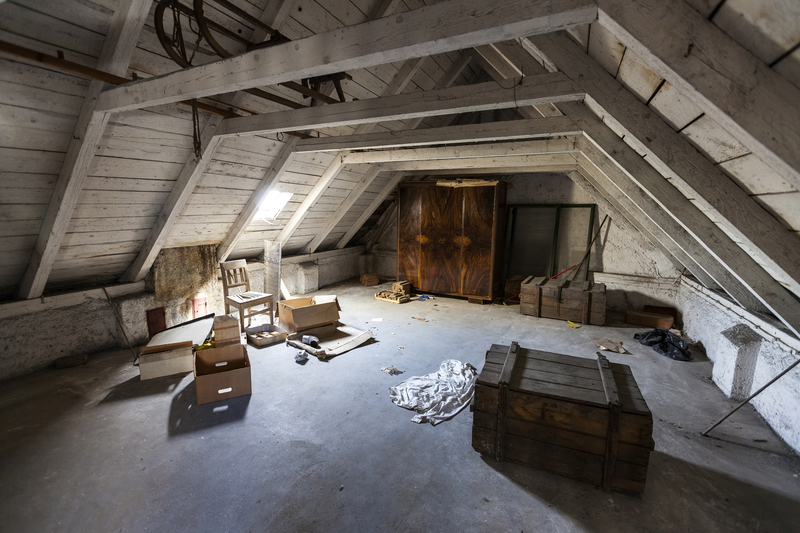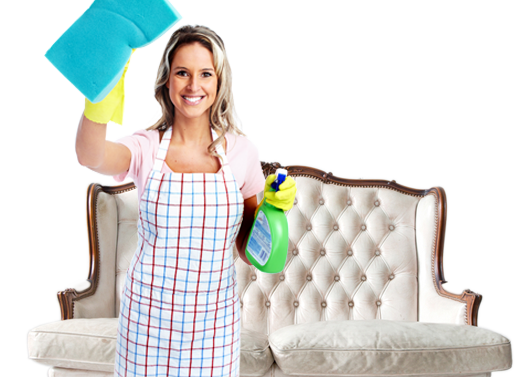Winning the War Against Stubborn Damp Smells
Posted on 07/10/2025
Winning the War Against Stubborn Damp Smells
There is nothing more off-putting than walking into a space and being greeted by the persistent, musty odor of damp. Whether you are a homeowner, a tenant, or a property manager, stubborn damp smells are a common challenge that can affect property value, health, and overall comfort. If you've tried to deodorize, ventilate, and clean but still can't shift that intrusive scent, this comprehensive guide is designed to arm you with the knowledge and techniques required for winning the war against stubborn damp smells once and for all.

Understanding Stubborn Damp Smells
Before you can effectively tackle damp odors, it's crucial to grasp where they come from and why they can be so difficult to remove.
What Causes Damp Smells?
- Excess Moisture: The root cause of most persistent musty odors is excess moisture lingering in your property -- be it from leaks, condensation, or inadequate ventilation.
- Mold and Mildew: These micro-organisms thrive on dampness and can penetrate porous materials such as wood, drywall, carpets, and fabrics, giving rise to an unmistakable earthy, unpleasant scent.
- Poor Air Circulation: Insufficient air flow allows damp areas to stay humid, aggravating the problem and encouraging mold growth.
Why Are Damp Smells So Persistent?
Damp odors are unique because they don't just sit on the surface -- they embed themselves deep into building materials. Without identifying and eliminating the source, these smells can return time and time again, despite regular cleaning. That's why it's essential to take a systematic approach to banish damp odors for good.
Step 1: Identifying the Source of Stubborn Damp Odors
Becoming a "damp detective" is your first and most important mission. Take time to thoroughly inspect your property for signs of moisture or water ingress.
Areas Prone to Dampness
- Basements and Cellars: Low-level buildings are highly susceptible due to their underground location and cooler temperatures.
- Kitchens and Bathrooms: Frequent exposure to steam and water makes these hotspots for condensation and leaks.
- Attics and Roof Spaces: Poor insulation or damaged roofing can allow water in, undetected for months.
- Behind Furniture and Curtains: Reduced air flow behind heavy furnishings often provides an ideal environment for damp to develop.
- Walls Near External Pipes: Leaks and seepage can silently create moisture problems over time.
How to Pinpoint Hidden Moisture
- Look for Visual Clues: Water stains, bubbling paint, peeling wallpaper, and mold patches are sure-fire signs of trouble.
- Use Your Nose: Follow the smell. Stubborn damp odors are usually strongest closest to the source.
- Moisture Meters: Affordable and widely available, these tools can help detect elevated damp levels within walls and floors.
Step 2: Eliminating the Source of Moisture
Successfully battling persistent damp smells requires a targeted attack on moisture.
Fix the Cause, Not Just the Symptoms
- Repair Leaks: Check roofs, plumbing, and foundations for issues and address them promptly.
- Improve Ventilation: Install or upgrade extractor fans in bathrooms and kitchens. Open windows regularly to promote air circulation.
- Insulate: Proper insulation helps regulate indoor temperatures and minimises condensation.
- Dehumidifiers: These can dramatically reduce ambient moisture, especially in high-risk rooms.
- Address Drainage Issues: Ensure gutters, downpipes, and exterior drainage direct water away from the property's foundation.
Tip: Always dry out affected areas thoroughly before moving on to deeper cleaning -- you don't want to trap moisture inside materials, prolonging the problem.
Step 3: Effective Cleaning to Remove Damp Odors
Once the main moisture source is under control, it's time to get rid of residual damp odors. Standard cleaning often isn't enough, so bring out the big guns:
Deep Cleaning Solutions
- Wash and Disinfect Surfaces: Use a mixture of water and white vinegar or a specialized anti-mold cleaner to wipe down all affected surfaces. Vinegar naturally kills most mold and mildew and neutralizes odors.
- Remove and Replace: Severely contaminated materials such as old carpets, underlay, and wallpaper may need to be replaced.
- Steam Clean: Hot steam can penetrate fabric and irregular surfaces, helping to eliminate embedded mold spores and smells.
- Baking Soda for Absorption: Sprinkle baking soda onto carpets and upholstery, let sit for several hours, and then vacuum thoroughly.
Don't Forget Soft Furnishings
Textiles such as curtains, cushions, and bedding are magnets for damp smells. Wash them with a cup of vinegar or specialized odor-removal detergent to restore freshness. For delicate items, try airing them out in direct sunlight--UV rays are effective at killing mold spores.
Step 4: Natural Remedies for Persistent Damp Smells
If commercial cleaners aren't your preference or if the odor lingers, there are a variety of natural solutions to help you win the battle:
- Activated Charcoal: Place bowls of activated charcoal throughout musty rooms to absorb odors over time.
- Coffee Grounds: Leftover coffee grounds can soak up stubborn smells in small spaces like cupboards and wardrobes.
- Essential Oils: Add a few drops of tea tree or eucalyptus oil to cleaning solutions for their natural antibacterial and deodorizing properties.
- Lemon Juice: The acid in lemon juice effectively breaks down and neutralizes unwanted smells and leaves a fresh scent.
- Salt: Salt naturally draws out moisture and can be left in dishes in damp corners of problematic rooms.
Airing Out is Key
No matter which methods you use, ensure regular airflow in your home. Open windows whenever possible, and use oscillating fans to circulate air. Fresh air is the enemy of persistent damp odors.
Step 5: Preventing the Return of Musty Damp Odors
Prevention is your long-term defense against recurring problems with dampness and musty smells.
Routine Maintenance Tips
- Check for Leaks Regularly: Make a habit of inspecting plumbing, roofing, and weatherproof seals--especially before rainy seasons.
- Monitor Humidity Levels: Keep indoor humidity below 60%. Humidistats and smart thermostats make this easier than ever.
- Keep Drains and Gutters Clean: Blocked drains and gutters lead to overflow and water penetrating walls.
- Repaint with Anti-Mold Paint: Modern paints now contain anti-microbial agents to help resist future mold infestations.
- Clear Clutter: Piles of clothes, papers, or furniture block airflow and encourage condensation. Keep spaces tidy and well-aired.
When to Call in the Professionals
Sometimes, despite your best efforts, damp odors persist due to underlying issues or widespread mold infestation. Don't hesitate to consult with specialist damp-proofing contractors or certified mold remediation experts in the following scenarios:
- Large-Scale Mold Growth: Extensive, visible mold colonies covering walls or ceilings.
- Structural Damage: If floors or walls show significant rot or integrity loss, professional assessment is essential.
- Health Concerns: If occupants experience ongoing respiratory problems or allergies suspected to be related to mold exposure.
- Persistent Damp After Blatant Repair: If your own repairs seem ineffective, a professional can help identify less obvious causes (hidden leaks, rising damp, etc.).
The Health Impacts of Musty Damp Smells
It's important to understand that musty damp odors can signal deeper problems that affect more than just the property:
- Respiratory Issues: Mold spores and musty particles can aggravate asthma, allergies, and trigger respiratory irritation.
- Weakened Immune Systems: Prolonged exposure increases susceptibility especially among children, older adults, and those with compromised immunity.
- Reduced Quality of Life: Persistent odors reduce comfort, relaxation, and pride in your home environment.
Don't ignore the signs! Tackling stubborn damp smells is as much about protecting health as it is about maintaining property value and comfort.

FAQs: Winning the War Against Stubborn Damp Odors
What's the fastest way to get rid of a damp smell?
Find and fix the moisture source quickly, use dehumidifiers, and deep clean affected areas with vinegar or baking soda for immediate odor relief.
Can air fresheners get rid of damp odors?
No. Air fresheners may mask smells temporarily, but without addressing the underlying moisture, the musty odor will return.
Is it safe to use bleach on moldy patches?
Bleach can kill surface mold on non-porous materials but may not penetrate deeper, nor is it always safe for all surfaces. Specialized anti-mold formulations or vinegar are often more effective and safer.
Conclusion: Banish Persistent Damp Smells for Good
Winning the war against stubborn damp smells is achievable with vigilance, targeted cleaning, and a proactive approach to moisture control. By identifying moisture sources, taking decisive action, and establishing good ongoing habits, you can reclaim your home from the grip of mustiness and enjoy cleaner air, a fresher atmosphere, and improved wellbeing. Should you face persistent or severe problems, remember that professional assistance is just a call away--protecting both your home and your health for years to come. Go forth and conquer those stubborn damp odors once and for all!
- Damp Smell Removal
- How to Remove Musty Odors
- Combatting Persistent Damp Smells
- Eliminating Damp Smells Effectively





